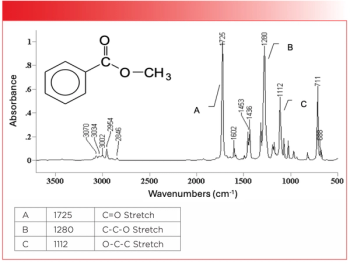
Best of the Week: Metal Ion Leaching, Analytica 2024 Preview
Here are the top five articles that the editors of Spectroscopy published this week.
This week, Spectroscopy published a variety of articles on the hottest topics in analytical science. Below, we’ve highlighted some of the most popular articles, according to our readers. Happy reading!
John Chasse
Leaching occurs when metal ions, such as iron, nickel, and manganese, enter the pharmaceutical production process and interact with medications’ active ingredients. Raw material suppliers do attempt to control metal amounts in their products, but leaching can occur at various stages of the packaging process. At Pittcon 2024, Jesse Bischof of SilcoTek presented metal ion leaching data that was measured using inductively coupled plasma-mass spectrometry (ICP-MS), describing a method to mitigate leaching in the form of a nano chemical vapor deposition (CVD) silicon-based coating. In this interview, Bischof provides an in-depth discussion on his CVD silicon coating approach.
Caroline Hroncich
On April 9–12, 2024, Analytica 2024 will be returning to Munich, Germany. This trade fair, which is also held in South Africa, China, Vietnam, and India, brings together industrial and academic scientists from all over the world. According to a
Will Wetzel
Astrophysics, one of the many science branches used for space exploration, seeks to understand the physical properties and behavior of celestial objects and phenomena using the principles of physics. Using this mindset, astrophysicists study astronomical objects such as galaxies, black holes, stars, and planets. Recently, astronomers identified two streams of stars, Shakti and Shiva, that were two “building blocks” for the creation of the Milky Way. In a recent study published in The Astrophysical Journal, Khyati Malhan utilized spectroscopy techniques and data from Gaia Data Release 3 to analyze both star clusters.
Will Wetzel
The National Aeronautics and Space Administration (NASA) conducts research across various fields, and their work has broadened our understanding about our galaxy, the universe, and Earth’s climate. Recently, their work in monitoring Earth’s environment and tracking potentially hazardous asteroids has helped protect our planet against threats from space. To increase this knowledge further, NASA’s work requires constant technological innovations, with spectroscopy playing vital roles in their research. In 2023, NASA announced a research project regarding its X-ray Imaging and Spectroscopy Mission (XRISM) spacecraft. This XRISM initiative will focus on studying the universe’s largest structures with the strongest gravity, as well as the hottest regions in the galaxy.
Aaron Acevedo
Urinary tract infections (UTIs) are the second most common type of infection in the body, resulting in more than 8 million doctor’s visits each year; furthermore, approximately 10 in 25 women and 3 in 25 men will have UTI symptoms during their lifetime. Of the different bacterium that can cause UTIs, one of the most common is Klebsiella (K.) pneumoniae. This pathogen can use different mechanisms to create antibiotic-resistant mutants, making them resistant to multiple significant antibiotics. In a recent study from Spectrochimica Acta Part A: Molecular and Biomolecular Spectroscopy, scientists created a system that combines Fourier transform infrared (FT-IR) spectroscopy with machine learning algorithms to identify antibiotic-resistant bacteria and mitigate any potential mutations. created a system that combines Fourier transform infrared (FT-IR) spectroscopy with machine learning algorithms to identify bacteria that is resistant to antibiotics.
Newsletter
Get essential updates on the latest spectroscopy technologies, regulatory standards, and best practices—subscribe today to Spectroscopy.




